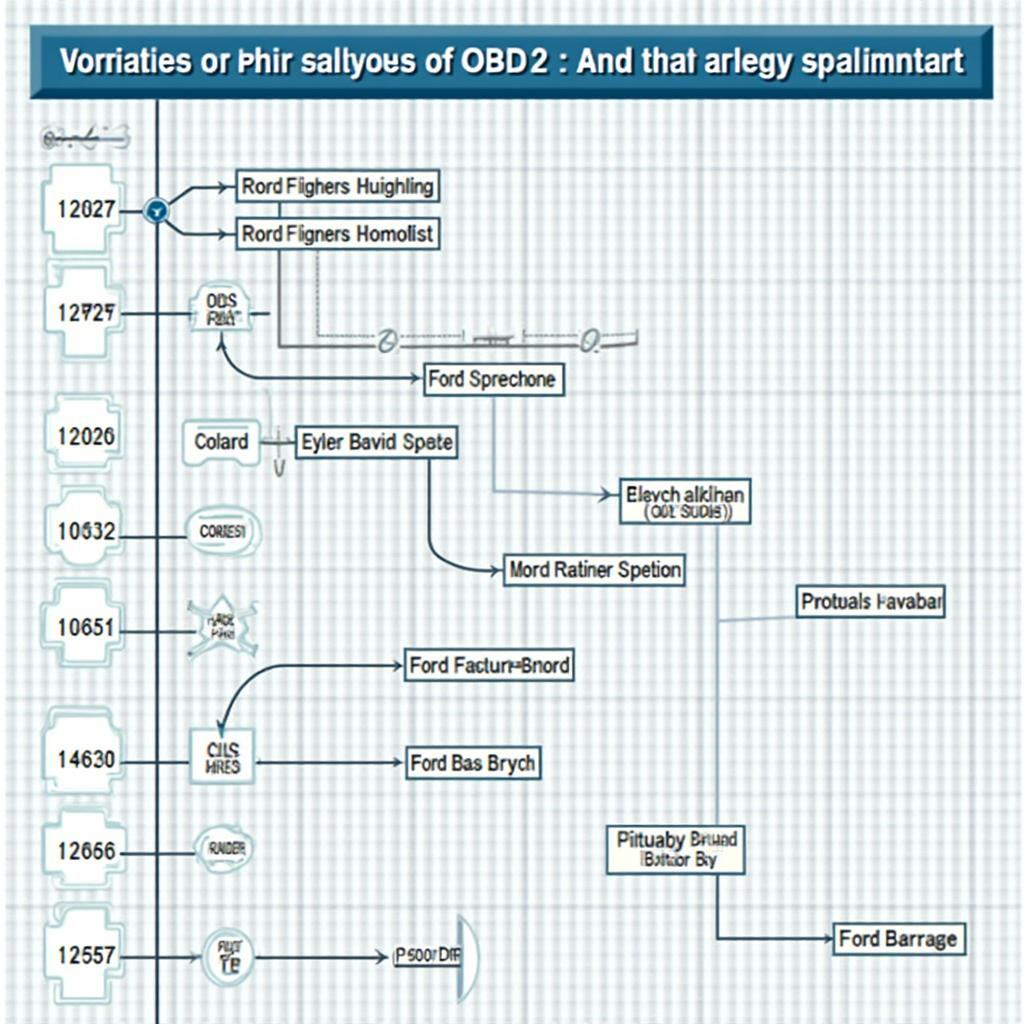The OBD2 start year is a crucial point in automotive history, marking a significant shift in how we diagnose and repair vehicles. Understanding this timeline is essential for anyone working with car diagnostics, from professional mechanics to DIY enthusiasts. This article dives deep into the history of OBD2, exploring its implementation timeline, regional variations, and its impact on the automotive industry. We’ll also answer some frequently asked questions to give you a complete understanding of the OBD2 standard and its start year.
When did OBD2 start? The rollout of OBD2 began in 1996 for all new passenger cars and light trucks sold in the United States. However, the story isn’t quite that simple. Different regions and vehicle types adopted the standard at varying paces, creating a somewhat complex timeline. This guide will unravel the complexities, providing a clear picture of the OBD2 start year for various vehicle makes and models around the world.
Understanding the OBD2 Standard and its Implementation
OBD2, short for On-Board Diagnostics, second generation, revolutionized vehicle diagnostics. Before OBD2, each manufacturer had its own proprietary diagnostic system, making it a nightmare for mechanics to work on different car brands. OBD2 standardized the diagnostic process, introducing a universal connector and communication protocol.
The implementation of OBD2 wasn’t an overnight event. While 1996 is widely recognized as the OBD2 start year in the US, some manufacturers started implementing the protocol earlier. This early adoption paved the way for the full implementation mandate. Furthermore, the adoption timeline differed across the globe, with European and Asian countries adopting the standard at a slightly later date. Knowing these nuances is critical for accurate diagnostics and repair.
what year did obd2 start being used in cars
OBD2 Start Year: Regional Variations
While the United States led the charge with the 1996 OBD2 mandate, other regions followed suit shortly after. The European Union adopted a similar standard, known as EOBD, which was largely based on OBD2. The implementation of EOBD varied slightly across different European countries but was generally in line with the US timeline.
Asian countries also adopted OBD2, though the implementation timeline varied across the region. Understanding these regional differences is important when diagnosing vehicles imported from different parts of the world. For example, a Japanese car from 1995 might have a different diagnostic system than a US car from the same year.
OBD2 Start Year for Different Vehicle Types
The OBD2 start year also varies based on vehicle type. While passenger cars and light trucks were mandated to have OBD2 in 1996 in the US, heavier vehicles like medium- and heavy-duty trucks had a different timeline. Understanding these differences is crucial for choosing the correct diagnostic tools and procedures.
what year did obd2 start in trucks
When Did Specific Manufacturers Adopt OBD2?
Each car manufacturer had its own approach to implementing OBD2. Some were early adopters, while others waited until the mandate came into effect. For example, some Ford models implemented OBD2 before 1996. This information can be useful when dealing with vehicles from specific manufacturers.
what year did ford start using obd2
“Knowing the precise OBD2 start year for a particular manufacturer can be incredibly helpful when troubleshooting complex issues,” says John Smith, Senior Automotive Diagnostician at Smith Auto Repair. “It allows us to pinpoint potential problems more efficiently.”
Why is Knowing the OBD2 Start Year Important?
Knowing the OBD2 start year is essential for various reasons:
- Choosing the right diagnostic tools: Different diagnostic tools are designed to work with different OBD2 protocols. Knowing the start year helps you choose a compatible scanner.
- Accurate diagnostics: Understanding the OBD2 implementation timeline ensures you’re using the correct diagnostic procedures for the specific vehicle.
- Troubleshooting issues: Knowing when OBD2 was adopted can help pinpoint potential problems more efficiently.
- Staying up-to-date: The automotive industry is constantly evolving. Staying informed about OBD2 and its history is essential for anyone working with car diagnostics.
Conclusion
The OBD2 start year is a significant milestone in automotive history. Understanding this timeline, including regional and vehicle-specific variations, is crucial for anyone working with car diagnostics. While 1996 is widely recognized as the OBD2 start year in the US, the complete story is more nuanced. By understanding these complexities, you can ensure accurate diagnostics and efficient repairs.
FAQ
- What is OBD2? OBD2 stands for On-Board Diagnostics, second generation, and is a standardized system for diagnosing vehicle problems.
- When did OBD2 start? OBD2 started in 1996 for US passenger cars and light trucks.
- What is EOBD? EOBD is the European equivalent of OBD2.
- Do all cars have OBD2? Most cars manufactured after the respective mandates in different regions have OBD2 or EOBD.
- Where is the OBD2 port located? The OBD2 port is typically located under the dashboard on the driver’s side.
- What can an OBD2 scanner do? An OBD2 scanner can read diagnostic trouble codes, monitor vehicle performance, and provide other useful data.
- How much does an OBD2 scanner cost? OBD2 scanners range in price from basic models to professional-grade tools.
Do you have other questions related to OBD2 and its history? Check out our other informative articles: what year did cars start using obd2.
For any assistance, contact us via WhatsApp: +1(641)206-8880, or Email: [email protected]. Our customer support team is available 24/7.


